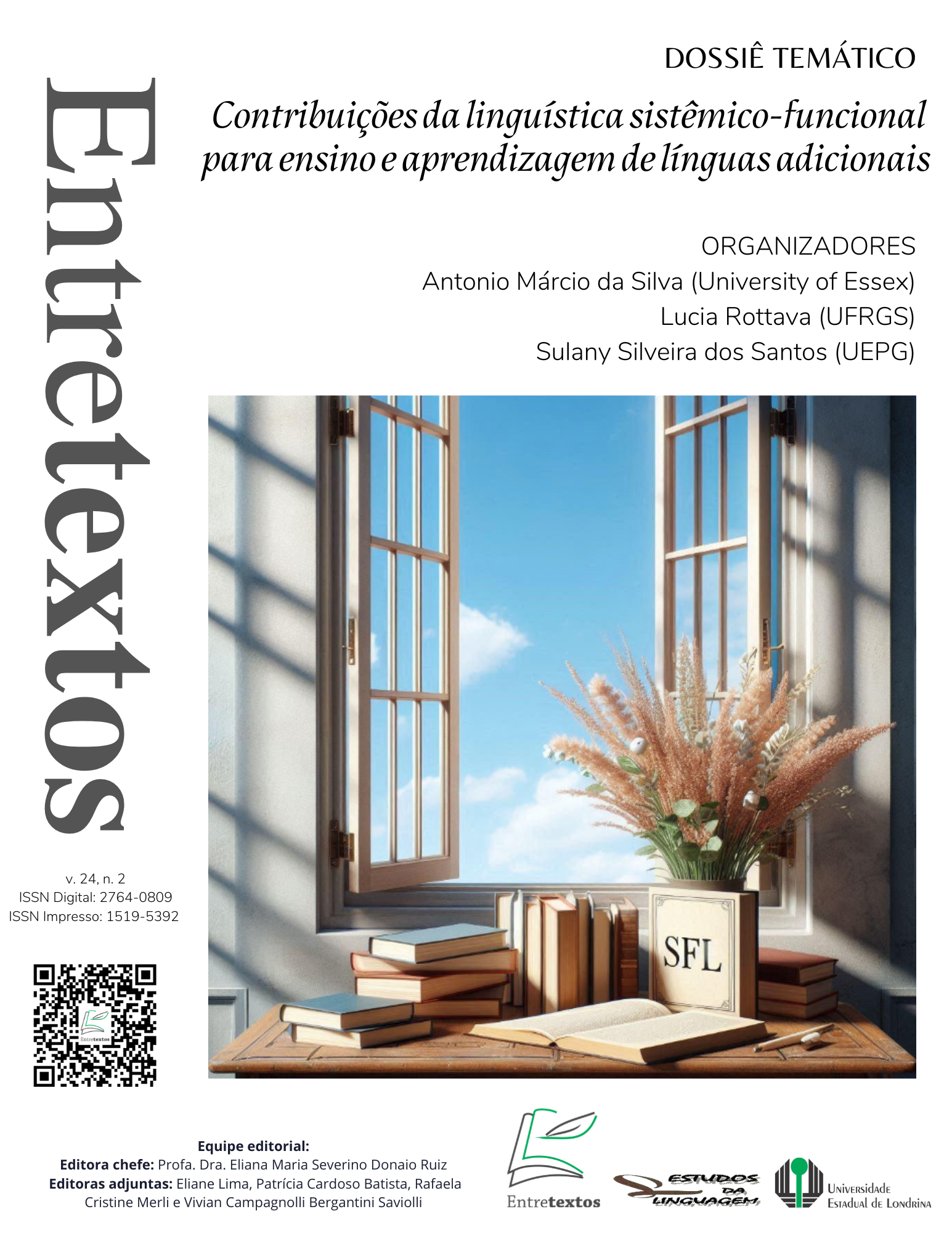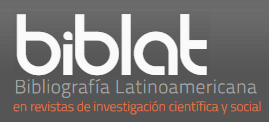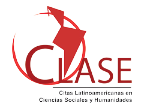“Gente” and “a gente” in the speech of the English 3D tutor: analysis in the Systemic-Functional perspective
Keywords:
systemic-functional grammar, ideational metafunction, interpersonal metafunction, linguistic resourcesAbstract
This work aims to analyze the linguistic resources used by the tutor of the English Online 3-D Course to construct meanings through lexical choices in interaction with students, focusing on the use of the noun “gente” and the pronoun “a gente” , for ideational and interpersonal meanings. It is a qualitative-quantitative research, a case study (Motta-Roth; Hendges, 2010), which is based on the transcription of the initial 10 minutes and 7 seconds of an English as additional language class implemented virtually in 2022. After that, we proceed to classify the sentences selected based on corpus selection criteria and, finally, we analyzed and discussed the data based on the lexico-grammatical systems of Systemic-Functional Grammar (Halliday; Matthiessen, 2004). For this analysis, we used the ideational and interpersonal metafunctions with the intention of investigating how language is constituted as an experience and in what ways the interaction between tutor and students occurs in the virtual class. The results indicate that there is a predominance of mental processes in the tutor's speeches, which are focused on the cognitive development of class participants from a collaboration/help perspective. Furthermore, the sentences are predominantly declarative clause propositions, corroborating the exchange of information between the tutor and the students.
References
CEZÁRIO, M. M.. Efeitos da Criatividade e da Frequência de uso no Discurso e na Gramática. In: SOUZA, Edson Rosa de (org.). Funcionalismo Linguístico: Análise e Descrição. São Paulo: Contexto, 2012.
COPE, B.; KALANTZIS, M. The things you do to know: An Introduction to the
Pedagogy of Multiliteracies. In: COPE, B.; KALANTZIS, M. A Pedagogy of
Multiliteracies. Learning by Design. pp 1-36, 2015.
FUZER, C.; CABRAL, S. R. S. Introdução à Gramática Sistêmico-Funcional em Língua Portuguesa. Campinas: Mercado de Letras, 2014.
GUGELMIM, L. De M.; FUZER, C.. Significados Experienciais e Interpessoais em uma Cartilha de Português como Língua de Acolhimento. [S.L.], v. 13, n. 1, p. 22-40, 26 out. 2022. Universidade Federal do Tocantins. http://dx.doi.org/10.20873/uft2179-3948.2022v13n1p22-40. Acesso em: 02 jul. 2023
HALLIDAY, M. A. K. “Part A”, in: HALLIDAY, M.A. K. e HASAN, R. Language, contexto and text: aspects of language in a social-semiotic perspective. Oxford: Oxford University Press, 1989.
HALLIDAY, M. A. K. An introduction to functional grammar. 2 Ed. London: Arnold, 1994.
HALLIDAY, M. A. K.; MATTHIESSEN, C. Halliday’s Introduction to Functional Grammar. London; New York: Routledge, 2004.
REIS, S. C. Curso English Online 3D no Moodle: uma proposta de artefato digital para o ensino de inglês como língua adicional na modalidade híbrida. Ilha do Desterro A Journal Of English Language, Literatures In English And Cultural Studies, [S.L.], v. 74, n. 3, p. 415-444, 8 set. 2021. Universidade Federal de Santa Catarina (UFSC).
ROSE, D; MARTIN, J. R. Learning to write, Reading to learn: genre, knowledge and pedagogy in the Sydney School. Londres: Equinox, 2012.
SANTOS, Z. A Linguística Sistêmico-Funcional: algumas considerações. Soletras, n.28, p. 164-181, jul./dez.2014.
Downloads
Published
How to Cite
Issue
Section
License
Copyright (c) 2024 Caroline Larrañaga, Susana Cristina dos Reis

This work is licensed under a Creative Commons Attribution 4.0 International License.
Entretextos adota a Licença Creative Commons Attribution 4.0 International, portanto, os direitos autorais relativos aos artigos publicados são do(s) autor (es), que cedem à Entretextos o direito de exclusividade de primeira publicação.
Sob essa licença é possível: Compartilhar - copiar e redistribuir o material em qualquer suporte ou formato. Adaptar - remixar, transformar, e criar a partir do material, atribuindo o devido crédito e prover um link para a licença e indicar se mudanças foram feitas.
















